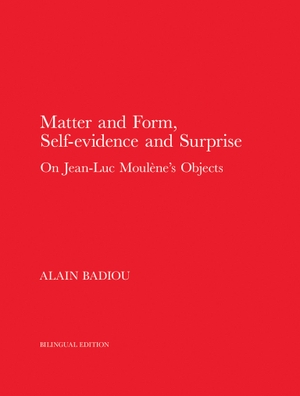Für statistische Zwecke und um bestmögliche Funktionalität zu bieten, speichert diese Website Cookies auf Ihrem Gerät. Das Speichern von Cookies kann in den Browser-Einstellungen deaktiviert werden. Wenn Sie die Website weiter nutzen, stimmen Sie der Verwendung von Cookies zu.
Cookie akzeptieren
- MIT Press
- 2019
- Gebunden
- 96 Seiten
- ISBN 9780997567496
The eminent French philosopher "dialecticizes" five of the artist Jean-Luc Moulène's objects with five conceptual formations from the history of Western philosophy. In this unique essay, first delivered as a lecture during a panel discussion with the artist and philosopher Reza Negarestani, Alain Badiou identifies and "dialecticizes" five of the artist Jean-Luc Moulène's objects with five conceptual formations from the history of Western philosophy. Aristotle's complex of matter and form is called to mind to describe the inner logic of a hard foam sculpture. A bronze statue with holes activates Plato's notion of participation of the concrete world in the "injured Idea of the Beautiful." A small metallic and incomplete "angel" engages Leibniz's affirmation that "everything that exists is composed of an infinity of things." Badiou's musings go on to pair a broken and repaired plastic chair with Victor Hugo; a terrible hand made of concrete with the Freudian unconscious; and a large- scale "red and blue monster" with rudimentary mechanisms of the Cartesian cogito, the famous "I think, therefore I am," with unexpected inversions and variations. Badiou refrains, of course, from claiming that Moulène thinks about any of these philosophers when making his specific works. What he
Mehr
Weniger
zzgl. Versand
Etwa 20 Tage